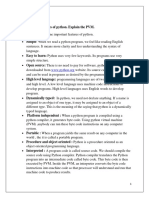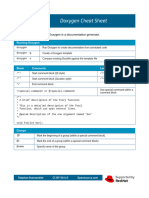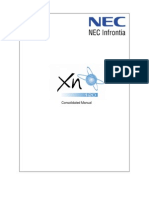0% found this document useful (0 votes)
130 views32 pagesProjects
The document outlines various Python projects including a calculator, guessing game, to-do list app, dice roller, password generator, contact book, rock-paper-scissors game, simple chatbot, weather app, file organizer, spam email detection, and handwritten digit recognition. Each project includes an overview, problem statement, learning outcomes, and code snippets demonstrating the implementation. The projects cover a range of programming concepts such as user input handling, conditional statements, loops, file handling, and machine learning techniques.
Uploaded by
manikantabandi45Copyright
© © All Rights Reserved
We take content rights seriously. If you suspect this is your content, claim it here.
Available Formats
Download as PDF, TXT or read online on Scribd
0% found this document useful (0 votes)
130 views32 pagesProjects
The document outlines various Python projects including a calculator, guessing game, to-do list app, dice roller, password generator, contact book, rock-paper-scissors game, simple chatbot, weather app, file organizer, spam email detection, and handwritten digit recognition. Each project includes an overview, problem statement, learning outcomes, and code snippets demonstrating the implementation. The projects cover a range of programming concepts such as user input handling, conditional statements, loops, file handling, and machine learning techniques.
Uploaded by
manikantabandi45Copyright
© © All Rights Reserved
We take content rights seriously. If you suspect this is your content, claim it here.
Available Formats
Download as PDF, TXT or read online on Scribd
/ 32























































































